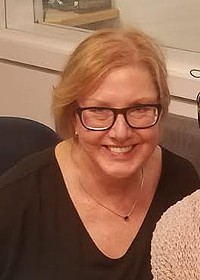Feature | Ruffled Feathers: In Tracy Aviary’s ballot battle for funding, its injured bird rehab program gets the boot
By Katharine Biele @kathybielePage 2 of 4
From fledgling to full-grownnNo, Brown is not your average zoo guy—nor is he a bird person. After three years of river running, ski-bumming and working with the state Division of Wildlife Resources, he got a degree in wildlife biology from the University of Vermont. He was working as a river guide and participating in fishery research on southern Utah rivers when, he says, he had an epiphany about the potential of environmental education. n
Graduate work at the University of Utah led him to the directorship of the Utah Society for Environmental Education. In 2002, he moved on, having earned a graduate degree form Antioch University-Seattle. He was working at the Center for Green Space Design in Salt Lake City just before signing on with the aviary. n
The aviary board was looking for someone to move the facility forward, since it had been stuck in neutral for so long. The aviary opened to the public in 1938, after the donation of 200 birds from the private collection of Salt Lake City banker Russell Lord Tracy. Calvin R. Wilson grew the aviary, where he served a 37-year tenure as curator until 1975. n
Aviary management actually merged with that of Hogle Zoo for a time in the mid ’70s, but the aviary was always the poor stepsister and never made a dime. Then-Mayor Ted Wilson wrested back control, and for a dozen years, the aviary was managed by Salt Lake City Corporation. n
The city threw about $500,000 at infrastructure needs over the years—enough to keep the aviary’s head above water. Then, in 1993, the Friends of Tracy Aviary formed in response to then-Mayor Deedee Corradini’s call to outsource city functions. Within a year, the aviary was flying solo with a largely advisory board trying to raise funds with fairly dismal results. Good will and funding from the Zoo, Arts and Parks tax initiative helped shore it up. n
When Pete Taylor joined the board some six years ago, fund-raising was still the main issue. The aviary was being run by Sharon Stenz, whose organizational skills had been honed at the Girl Scouts of America. n
But the early 2000s weren’t the best of economic times, and when Stenz was hit by a car and seriously injured, fund-raising took a nose dive. “The board was loosely run at that time frame, and looking forward, we didn’t know the long-term prognosis for Sharon,” says Taylor, a professional headhunter who became board chairman. “The budget was askew, cash flow was extremely tight and a group of board and staff, on a bare-bones budget, started to work through this.” n
Part of the working through required finding a new director. “Tim had the best foundation with the mission of the organization and his ability to tie and get into fund-raising,” Taylor says. “He had to deal with a lot of setbacks not of his doing—30 years of past ignoring the organization. He put together a strong format to rebuild and in the last five years, around $4- to $5 million has been spent on upgrading the aviary.” n
Indeed, Brown has brought a vision to the aviary. After Destination Argentina! came the exhibit Kennecott Wetland Immersion Experience. Brown’s wife, Angela Dean, an architect, has donated her time to secure materials that finished the Chase Mill, the aviary’s only public indoor space. n
The master plan calls for a “periphery experience,” by which visitors will go from exhibit to exhibit and see the birds through viewer-friendly barriers. Things seemed to be moving along—until the accreditation setback. n
No one associated with the aviary anticipated the denial. The AZA had even provided a mentor to Brown who “led him to believe it was very positive,” Taylor says. “We were surprised when they denied our accreditation, but the things they wrote up weren’t a surprise. The infrastructure is what it is.” n
And so, it has become even more important for the aviary to win its bond election. Earlier this year, the Salt Lake County Council approved putting the $19.3 million bond proposal on the ballot. Proponents say the measure would raise property taxes on a $235,000 home by $2.51 annually for 15 years. Voters will also weigh in on a separate $65 million bond proposal for updates to the zoo.n
More by Katharine Biele
-
Deseret News poll shows Donald Trump skating to another victory in Utah.
Hits & Misses
- Apr 17, 2024
-
LDS General Conference dominates local news while stories on diversity and discrimination take a back seat
Hits & Misses
- Apr 10, 2024
-
Utah's GOP Senate candidates try to out-MAGA each other in a race to the bottom.
Hits & Misses
- Apr 3, 2024
- More »
Latest in News
Readers also liked…
-
Raise a glass for E.L.T Harrison, architect of the Beerhive building on Main
Small Lake City
- Oct 11, 2023




